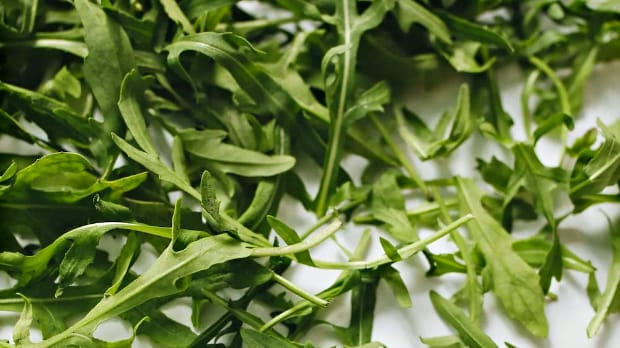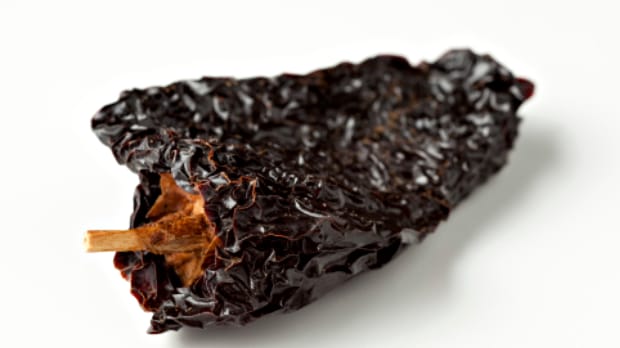What is Endive?
Endive, pronounced [EN-dyv], also referred to as Belgian endive, French endive, and witloof chicory, is a leafy green vegetable that originates from the chicory plant. Specifically, it is the blanched shoots of the chicory root that are eaten. These blanched shoots are produced by first digging up the chicory roots and then storing them in cool, dark locations or forcing beds, where they are covered with sand. After some time, the shoots grow to be around 4 to 6 inches long and 1 1/2 inches wide. At this point, they are harvested and can be consumed in a variety of ways. Endive can be eaten raw as part of salads, or it can be cooked by braising it in a rich butter or cream sauce, making for a delectable side dish.
What are the Nutritional Benefits of Endive?
If you’re looking for a delicious and nutritious addition to your diet, look no further than the endive. Also known as escarole, this leafy vegetable packs a punch in terms of both taste and nutritional value. One of the primary benefits of this leafy vegetable is its high fiber content. Fiber aids in digestion and can help regulate blood sugar levels. But the benefits don’t stop there – it is also a great source of vitamin K, vitamin A, and folate.

Not only does endive promote healthy digestion and support overall health, it can also help promote weight loss and maintain a healthy weight. Plus, its low calorie count makes it a great snack option for those looking to satisfy their hunger without packing on the pounds. So next time you’re at the grocery store, pick up some and reap the nutritional benefits for yourself!
Types Available
As a food blogger, I often share tips for choosing produce that is both nutritious and delicious. One vegetable that often goes overlooked is endive, but there are several types available that you may want to try! First, there is curly endive, which has narrow, curly green leaves that are slightly bitter. This type is often used in salads. Then there is escarole, which is similar in appearance to lettuce, with broad, thick leaves and a slightly bitter taste. Escarole is great in soups and stews.
Another variety is Belgian endive, which is grown in darkness to produce its characteristic tightly-packed, pale leaves. It has a milder flavor and is often used in salads or as a vehicle for dips and spreads. Finally, there is puntarelle, which is a type of chicory with long, narrow leaves and a mildly bitter flavor. This type of endive is popular in Italian cuisine. No matter which variety you choose, you can enjoy a unique flavor and tons of nutrients, including fiber, vitamins C and K, and folate.
What are the Best Uses?

If you’re looking for a new leafy green to try, you might want to consider endive! This often-overlooked vegetable has a slightly bitter taste and a crunchy texture that can add a unique twist to your meals. Here are some of the best ways to add this interesting vegetable to your cooking:
Salads: The flavorful leaves make great salad greens. You can use them on their own or mix them with other lettuces and vegetables to create a delicious and healthy salad.
Appetizers: The crunchy leaves also make great vessels for appetizers because of their unique shape. You can use them as “boats” to hold dips or spreads, or fill them with ingredients like cheese and fruit for a sweet and savory treat.
Grilled or roasted: Endive is delicious when grilled or roasted. Simply brush the leaves with olive oil and seasoning, then cook them until they’re slightly charred and tender. This brings out the vegetable’s natural sweetness and adds a smoky flavor.
Soup: Add the leaves to your favorite soup recipe for a nutritious and tasty addition.
Remember, when using this leafy vegetable, be sure to choose fresh, firm heads that have no discoloration or wilting. With its unique taste and versatility, endive is definitely worth a try if you haven’t already!
How do You Store Endive?
Are you wondering how to store endive to keep it fresh and crunchy? It’s a delicate green that can wilt quickly if not stored properly. Here are a few easy steps to help you store it like a pro: First, separate the leaves and discard any that are damaged or discolored. Then, gently wash the leaves in cold water and pat them dry with a clean towel or paper towel. Next, wrap the leaves in a damp paper towel and place them in a plastic bag with a few holes poked in it for air circulation. Finally, store the endive in the crisper drawer of your refrigerator. It should last for up to one week.
Remember to only wash the endive right before you’re ready to use it. This will help prevent it from wilting too soon. With these simple steps, you’ll have fresh, crunchy leaves ready to enjoy in your favorite salads or dishes. Happy cooking!
How to Prepare Endive
Today we’re going to talk about the often overlooked, but delicious endive. This leafy vegetable might be new to you, but it’s not intimidating to prep. With a few simple steps, you’ll be ready to add some crunch and nutrition to lots of dishes! First, rinse the endive under cold water to remove any dirt or debris. Then, cut about half an inch off the bottom of the head and discard. Next, separate the leaves and trim any brown or wilted edges.
Once your endive is prepped, it’s time to get creative with your recipe ideas! It can be eaten raw in salads, as a dip vessel, or even sautéed as a side dish. Remember, this beautiful leafy veggieis a great source of fiber, vitamin C, and potassium, so don’t let its unique shape intimidate you from trying it. With a little preparation, it can be a nutritious and delicious addition to any meal. Happy cooking!
When is Endive in Season?
Are you looking for a tasty vegetable to add to your next meal? Look no further than endive! This versatile veggie can add some crunch and flavor to any dish. But when is the best time to enjoy these delicate leaves? The answer is the fall and winter months! It is a cool-season vegetable that thrives in cooler temperatures. This means that it’s at its peak flavor during the latter part of the year. In fact, some of the best endive is harvested in December and January. So next time you’re at the grocery store or farmer’s market, keep an eye out for this delicious veggie. Whether you’re adding it to a salad, roasting it, or using it as a scoop for dips, endive is sure to impress. Happy cooking!
Improve Your Health With Seasonal Eating
What to Serve Endive With?
- Roasted chicken
- Prosciutto
- Goat cheese
- Walnuts
- Apples
- Pears
- Balsamic vinegar
- Olive oil
- Garlic
- Lemon juice
What Traditional Cuisines Use Endive?
Endive is commonly used in French, Belgian, Dutch, and German cuisines. It is often served raw in salads or cooked in dishes such as stews, casseroles, and soups. It can also be braised, sautéed, or grilled and is a popular ingredient in many dishes such as gratins and tarts.
Tasty Recipes
- Endive Salad with Parmesan & Orange
- Stuffed Belgian Endive
- Stuffed Endive Appetizer with Blue Cheese and Apple
- Curly-Endive Salad with Bacon and Poached Eggs
- Mediterranean Endive Boats
Key Takeaways
- Endive is a versatile vegetable that can be cooked in a variety of ways, including roasting, steaming, sautéing, and grilling.
- It is a great source of dietary fiber and essential vitamins and minerals.
- When preparing endive, it’s important to trim away any tough or bitter outer leaves.
- To preserve the crunchy texture and sweet flavor, it’s best to cook it quickly over high heat.
- The slightly bitter vegetable pairs well with a variety of ingredients, including meats, cheeses, fruits, and nuts.
- The crunchy leaves make a great addition to salads, sandwiches, wraps, and other dishes.
References: Nutritional and Health Benefits of Endive | Nutritional Composition and Health Benefits of Endive (Cichorium endivia) | Endive (Cichorium endivia L.): A review on phytochemistry and pharmacological activities | Nutritional composition of Belgian endive |




